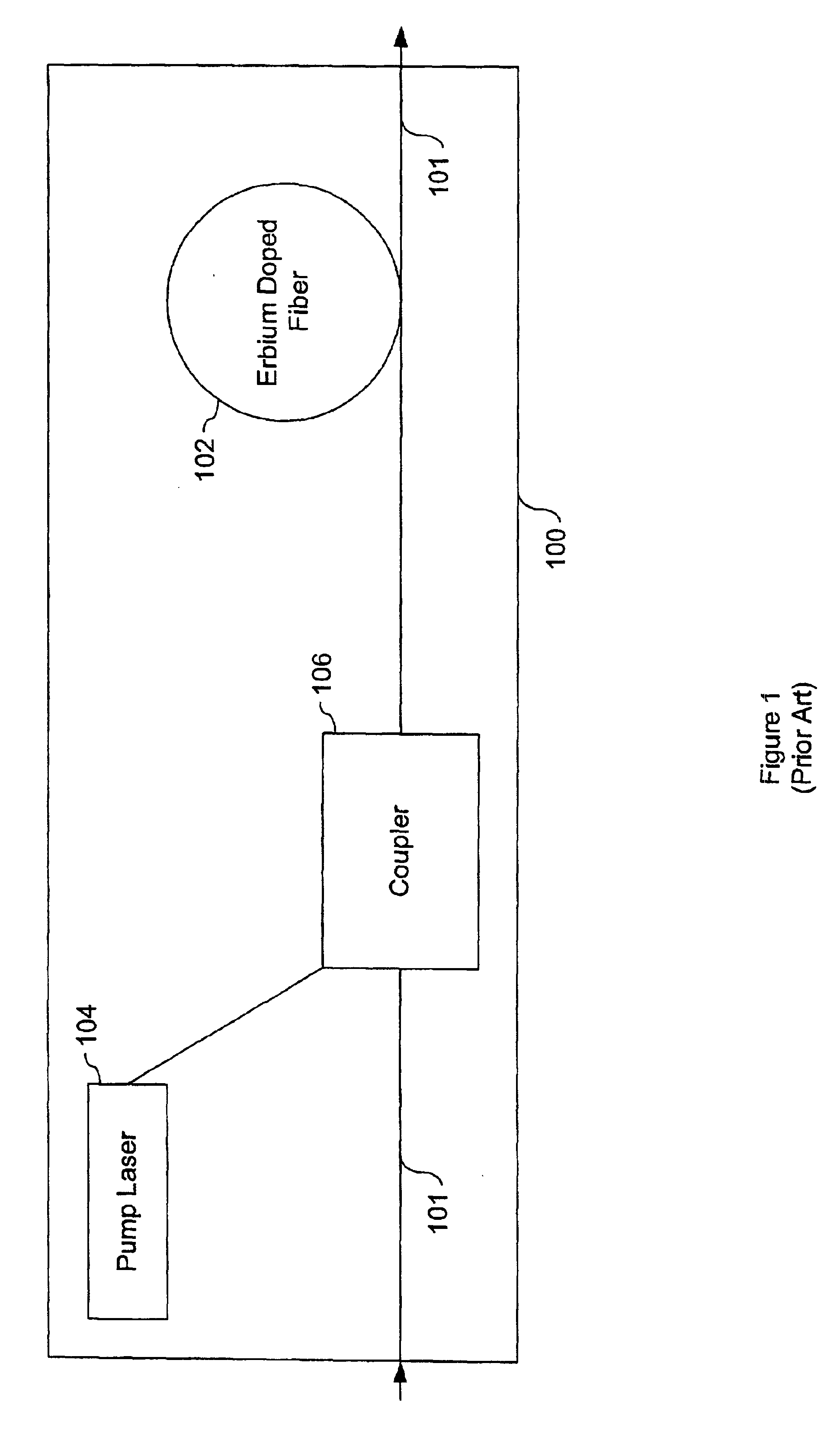Lasing semiconductor optical amplifier with output power monitor and control
a technology of semiconductor optical amplifier and output power monitor, which is applied in the direction of semiconductor lasers, laser optical resonator construction, laser details, etc., can solve the problems of degrading the corresponding signal-to-noise ratio, attenuating the optical signal, and stretching the network capacity to its limi
- Summary
- Abstract
- Description
- Claims
- Application Information
AI Technical Summary
Benefits of technology
Problems solved by technology
Method used
Image
Examples
embodiment 500
The active region 504 in embodiment 500 includes a double heterostructure (DH) of p-InAlAs / I-InAlGaAs / n-InAlAs. In other embodiments, the active region 504 may comprise a multiple quantum well (MQW) active region. MQW structures include several quantum wells and quantum wells have the advantage of enabling the formation of lasers with relatively low threshold currents. Both double heterostructures and quantum wells may be fabricated using various materials systems, including for example InAlGaAs on InP substrates, InGaAsP on InP, GaInNAs on GaAs, InGaAs on ternary substrates, and GaAsSb on GaAs. An embodiment uses InAlGaAs grown on an InP substrate. GaAs, InGaAs, or InAlGaAs on GaAs; or nitride material systems may also be suitable. Alternatively, the active region 504 may comprise a single quantum well.
The choice of materials system will depend in part on the wavelength of the optical signal to be amplified, which in turn will depend on the application. Wavelengths in the approxima...
second embodiment
A second embodiment operates to bring a VLSOA 600 out of saturation. In this embodiment, the power monitor 657 determines if the electrical signal level on line 620 is approximately zero. A very small or non-existent electrical signal indicates that the VLSOA 600 is saturated. In response, the pump source 610 increases the electrical pump current which increases the VLSOA 600 saturation level and corresponding output power.
Thus, the present invention dynamically adjusts the electrical pump current according to the amplification of the optical signal. Additionally, the present invention provides network designers and managers an efficient way to adjust optical amplifiers as networks are scaled.
C. Saturation Protection for VLSOA
The following embodiment is a feed-forward architecture. Feedback architectures are equally possible. FIG. 7 illustrates another embodiment of VLSOA output power monitor and control according to the present invention. A first VLSOA 705 has an input 710 and ampl...
PUM
 Login to View More
Login to View More Abstract
Description
Claims
Application Information
 Login to View More
Login to View More - R&D
- Intellectual Property
- Life Sciences
- Materials
- Tech Scout
- Unparalleled Data Quality
- Higher Quality Content
- 60% Fewer Hallucinations
Browse by: Latest US Patents, China's latest patents, Technical Efficacy Thesaurus, Application Domain, Technology Topic, Popular Technical Reports.
© 2025 PatSnap. All rights reserved.Legal|Privacy policy|Modern Slavery Act Transparency Statement|Sitemap|About US| Contact US: help@patsnap.com



